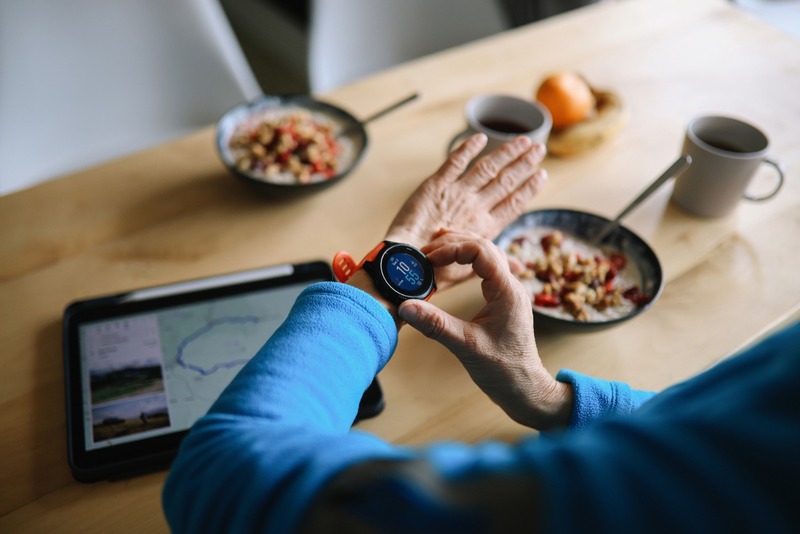News
Understanding Women's Heart Health
This article was written by Kirsten Dobroth and originally ran in the Vail Daily on June 21 2016.
In a public service announcement for the American Heart Association actress Elizabeth Banks plays a mother going through her morning getting her children and husband ready for the day along with finishing up her notes for a work meeting later that morning. As Banks runs from one part of the house to the other preparing sandwiches and packing backpacks she begins to perspire before grabbing her jaw in pain.
Are you okay Mom? asks Banks' pseudo son.
She continues her morning routine assuring him she's fine before ushering the family out of the house and looking up symptoms of a heart attack on her smartphone. Realizing she's having a heart attack she calls 911 and is told they'll be there in two minutes. She looks panicked around her messy kitchen before sitting up abruptly presumably to clean and asks Can you be here in 10 minutes instead?
While the short video offers a kind of comical insight into the mental programming of women undergoing a medical emergency far too often women follow this same pattern when actually experiencing a heart attack. And while oftentimes the role of family caretaker can take precedence for women when responding to their own health health care providers are working on ways to stress to women the importance of keeping tabs on their cardiac health choosing a healthy lifestyle to combat heart disease and the difference in symptoms women experience when undergoing a heart attack compared to men.
Lack of understanding
Oftentimes the risks posed to women from poor cardiac health and associated cardiac diseases are misunderstood as being a men's health problem although the numbers tend to reflect that heart disease has no gender preference. According to the American Heart Association heart disease is the No. 2 killer of women causing 1 in 3 deaths annually.
Similarly heart disease and heart attacks aren't limited to older unfit groups of women. The American Heart Association's Go Red for Women campaign cites 64 percent of women who die suddenly of coronary heart disease as having no previous symptoms of the disease.
Healthy younger women often overlook things such as elevated cholesterol or blood pressure among other things because of their age or activity level although the risk of heart attack can still be present because of factors such as diet smoking and stress. The use of birth control pills can also increase the risk of heart disease and heart attacks among younger females.
Delay in treatment
Furthering the misunderstanding between heart disease and the risk it poses to women is the fact that heart attack symptoms often present themselves differently in women than the more classic symptoms observed by men.
Kelly Fralick a nurse practitioner at Vail Valley Medical Center's Cardiology Institute said the difference in how genders perceive heart attack symptoms can lead to crucial missteps when seeking medical help.
Heart attack symptoms are often subtler in women and don't always present themselves in the same way we typically define them in men she said Sometimes this means that women stay at home longer instead of coming in for medical attention.
In particular women may experience a heart attack through symptoms that seem more general to them. Flu-like symptoms back pain abdominal pain and jaw pain are all indicators of heart attack in female populations that might present themselves exclusively or along with some of the more common indicators of heart attacks in men (chest pain left arm pain left jaw pain).
Katie Schofield a cardiac nurse at Vail Valley Medical Center said women often overlook these symptoms as less serious ailments and can lead to misdiagnosis of cardiac problems down the road.
Because the symptoms women experience while having a heart attack can be vague women take longer to seek medical attention and once they seek the medical care it can be difficult for a doctor to recognize their symptoms as heart related she said. All of these issues lead to a delay in the definitive treatment of the underlying heart attack. This increases the mortality rate of women having a heart attack.
Some studies have linked the delay in seeking treatment which is more typical in women than men with women's familial roles as caregivers. Pair that with symptoms of heart attack that are often perceived as being more acute than classic symptoms and women are more likely to dismiss the medical emergency they are experiencing.
Mitigating the risks
While certain diseases and ailments are largely out of patient control because of family history cardiac health and the risk of developing heart disease are largely under patient control through lifestyle choices.
Family history can lead individuals to being more prone to certain conditions but much of this risk can be mitigated through things such as regular exercise a healthy diet not smoking and seeing a physician for regular health screenings. Developing an understanding of individual baseline health is also an important part of keeping tabs on changes in health and addressing unhealthy behavior.
The good thing is that heart disease can be a very preventable thing if you know your risk have a good relationship with your doctor and have a healthy lifestyle Fralick said. Knowing your numbers is an important part of keeping track of your baseline cardiac health in this regard and keeping track of any changes in your health.
The numbers are made up of blood pressure cholesterol blood sugar and body mass index and can help women paint a more individualized picture of their cardiac health along with other lifestyle factors and family history in determining a plan to take care of their hearts. Schofield added that while some ailments are largely out of patient control women could take charge of their cardiac health in order to reduce the risks of developing heart disease or to minimize the severity of the disease.
Heart disease is unlike cancer in that cancer happens to us: We don't have control over it and when diagnosed with cancer we count on doctors and medications to cure the disease she explained via email. With heart disease there are no doctors or medications that can cure the disease doctors and medications can treat symptoms of the disease but cannot cure it.
It is up to the individual to modify her risk factors and make a conscious decision to become healthy and maintain that healthy lifestyle. People must take charge of their health.
HEALTHY HEART TIPS
Life's Simple Seven Tips from the American Heart Association for a Healthy Heart
Get active: Aim for at least 30 minutes of daily exercise.
Control cholesterol: Strive for a diet low in low-density lipoproteins (LDLs) the cholesterol largely responsible for arterial blockages.
Eat healthy: Pack your plate with veggies fruit low-fat dairy fiber-rich whole grains and lean meats including fish.
Manage blood pressure: Along with exercise and following a healthy diet look for ways to eliminate stress limit alcohol consumption and kick bad habits such as smoking.
Lose weight: Talk to your doctor about what is a healthy body mass index for you and look for ways to incorporate diet and exercise into your routine to lose extra fat.
Reduce blood sugar: Read food labels and look for ways to trim some of the added sugar from your daily caloric consumption.
Stop smoking: Quitting smoking can raise your levels of high-density lipoproteins (HDLs) or healthy cholesterol and improve cardiovascular and respiratory function making it easier to stay physically active.
MORE INFORMATION
For more information contact Vail Valley Medical Center's Cardiology Institute at www.vvmc.com/cardiology
More News
-
New!
More

Keeping the Peace This Holiday Season: Tools for Handling Tense Moments With Care
Holidays may be joyous, but they often come with awkward moments, family dysfunction and difficult conversations.
-
More

First Chair to Last Call: What Does Alcohol Really Mean For Your Health?
In nearly every Colorado ski town, some iteration of the neon sign blares its play-hard-party-harder anthem. It’s a not-so-subtle nod to mountain party culture, a lifestyle that normalizes combining sports and outdoor adventures with heavy drinking and partying. In Eagle County, après culture, high-altitude living and outdoor performance have coexisted for as long as locals have been sliding on snow. But how much is too much at altitude? And what role do social support systems play in helping residents find balance?
-
More

Counting More Than Steps: How Wearables Can Help (or Hinder) Your Health
From step counts to sleep stages, heart rate variability to blood sugar spikes, wearable devices are giving us a front-row seat to what’s happening inside our bodies. Strapped to wrists, slipped onto fingers or wrapped around our biceps, wearables like the Oura Ring or Whoop strap promise insight and advice in the quest for better health.





